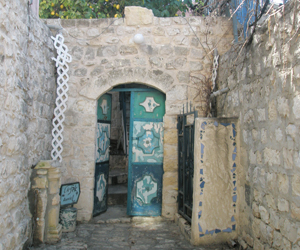Safed Massacre Of 1929
Relative Peace
Between the years of 1922-1928, the Jews and Arabs of Palestine seemed to coexist in relative peace. Late in the year 1928, however, the relationship became not just rocky, but downright violent, beginning with minor scuffles between the two groups. The subject of these disputes was focused on the right of the Jews to pray at that famous remnant of the Jewish temple, the Western Wall, in Jerusalem. Mayhem ensued in 1929 when Hadj Amin al-Husseini incited Arab hatred by stating that the Jews had placed Arab mosques and other holy Moslem sites in danger.
The Jews held a march in the Jewish city of Tel Aviv on August 14, 1929. Six thousand Jews chanted the words, "The Wall is ours." On the 15th, hundreds of Jews descended upon the Western Wall to demonstrate in support of their right to worship there. The next day, Friday, August 16, an inflammatory sermon was preached resulting in a rally cobbled together by the Supreme Moslem Council. The demonstrators marched to the Wall, where they burned prayer books and the notes of Jewish supplicants, placed by tradition into the cracks of the Wall.
Cruel Slaughter
On Friday August 23, the violence moved outside the confines of Jerusalem, to many other parts of the country as bands of Arabs attacked the Jews. In many locations, the mobs were joined by Arab policemen. Attacks on Jews in the cities of Tel Aviv and Haifa were well-defended by armed Jews, while Hebron suffered the worst with the cruel slaughter of 67 Jewish men and women. In Safed, 18 Jews were killed. Altogether, across the country, there were 133 Jewish deaths and more than 300 injured.
A resident of Safed at the time of the massacre, David Hacohen had been away at the time of slaughter, reaching the city two days later. He believes he was the first to arrive in the city from the outside in the aftermath of the pogrom. Hacohen remembers that the official statement released by the British said that the "disturbances" had broken out on August 29, at 6:15, that the army had arrived by 8:35, and that the restoration of order was immediate. The statement went on to report some fatal casualties and many burnt houses, but claimed that Jewish inhabitants had been moved to safety and that calm prevailed in the city of Safed.
Ongoing Pogrom
Meanwhile, rumors continued to fly that the pogrom in Safed was ongoing, but the British Government House gave no further information. Two days later, Hacohen managed to find his way to the town where the Jewish elders of the cities fell upon him weeping bitter tears. Said Hacohen, "Inside the houses I saw the mutilated and burned bodies of the victims of the massacre, and the burned body of a woman tied to the grille of a window."
Referring to the marauding Arabs, Hacohen continued, "They slaughtered the schoolteacher, Aphriat, together with his wife and mother, and cut the lawyer, Toledano, to pieces with their knives. Bursting into the orphanages, they smashed the children's heads and cut off their hands. I myself saw the victims."
The total loss to Jewish life and property was 18 killed, about 40 wounded and 200 houses burned and looted.

